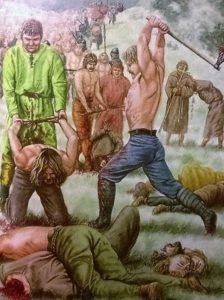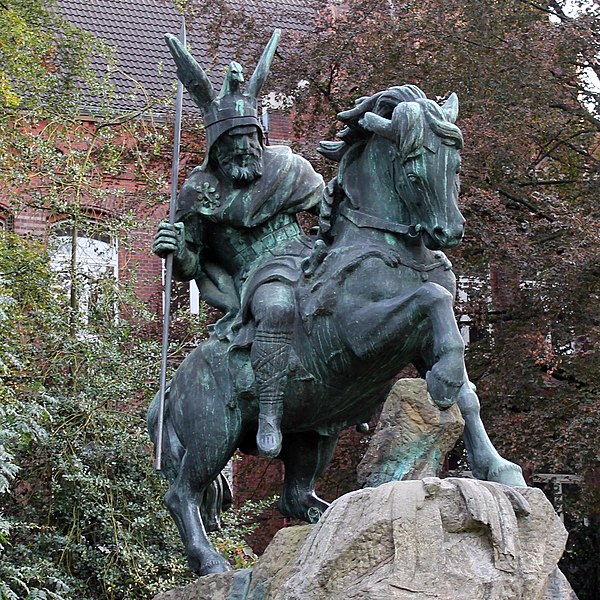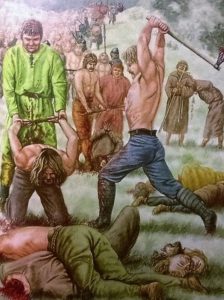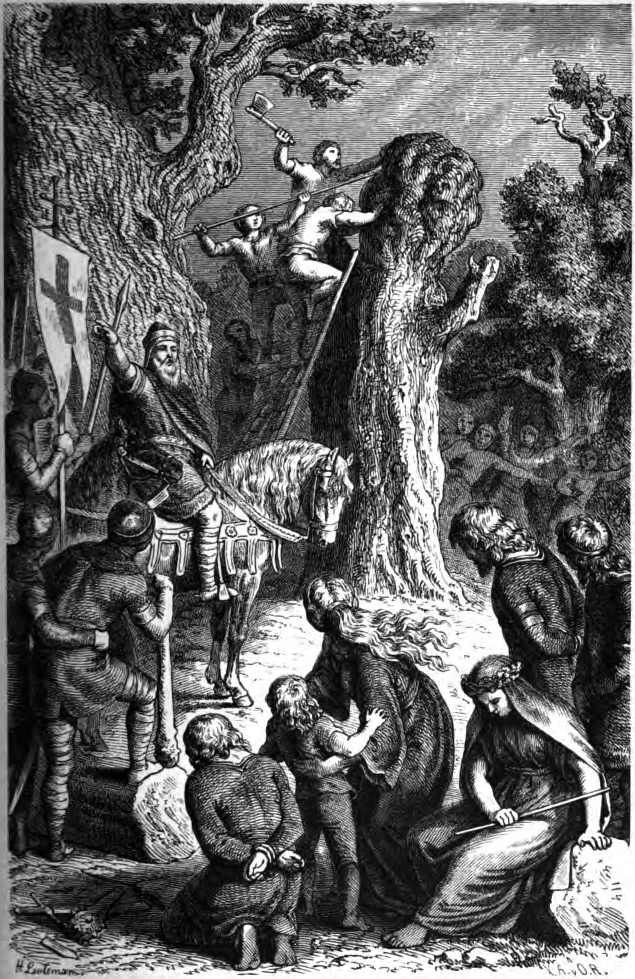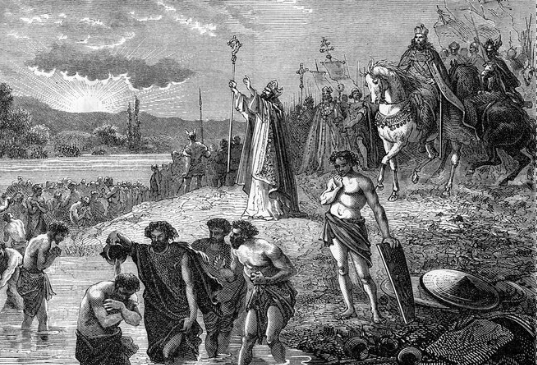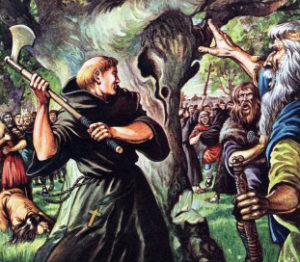Or:
How the Woke monster originated
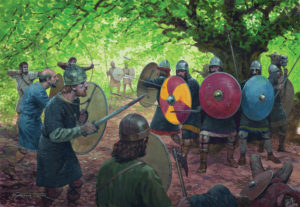
From: “Conquest of Saxony 782-785 (Campaign 271)”, pages 58-59.
Illustrator: Graham Turner.
In the summer of 772, fifty years after Boniface’s felling of Thunor’s oak, another tree—the greatest of all the Saxons’ totems—was brought crashing down. Fearsome, phallic, and famed across Saxony, the Irminsul was believed by devotees of the ancient gods to uphold the heavens. But it did not. The skies remained in their place, even once the sanctuary had been demolished. Yet to the Saxons themselves, it might well have seemed as though the pillars of the world were crumbling. Devastation on a scale never before visited on their lands was drawing near. The desecrator of the Irminsul was no missionary, but a king at the head of the most menacing war-machine in Europe. Charles, the younger son of Pepin, had ascended to the sole rule of the Franks only the previous December. Not since the vanished age of the Caesars had anyone in the West commanded such resources. Prodigious both in his energies and in his ambitions, he exerted a sway that was Roman in its scope. In 800, the pope set an official seal on the comparison in Rome itself: for there, on Christmas Day, he crowned the Frankish warlord, and hailed him as ‘Augustus’. Then, having done so, he fell before Charles’ feet. Such obeisance had for centuries been the due of only one man: the emperor in Constantinople. Now, though, the West had its own emperor once again. Charles, despite his reluctance to admit that he might owe anything to an Italian bishop, and his insistence that, had he only known what the pope was planning, he would never have permitted it, did not reject the title. King of the Franks and ‘Christian Emperor’, he would be remembered by later generations as Charles the Great: Charlemagne.
Many were his conquests. During the four decades and more of his rule, he succeeded in annexing northern Italy, capturing Barcelona from the Arabs, and pushing deep into the Carpathian Basin. Yet of all Charlemagne’s many wars, the bloodiest and most exhausting was the one he launched against the Saxons… [pages 207-208]
On the same page Tom Holland talks about what this warlord, who wanted to imitate King David, did in 782: in a single day he beheaded 4,500 Saxon prisoners who refused to worship the god of the Jews. Then he adds:
There was more to the bloody rhythms of Frankish campaigning, however, than the goal merely of securing for the new Israel a troubled flank. Charlemagne aimed as well at something altogether more novel: the winning of the Saxons for Christ.
Christianity was imposed by force upon the white race. The Aryan religions were destroyed by Constantine and his successors as well as by Charlemagne and his successors: the architects of a Dark Age which in our woke days has reached its blackest hour.
What American white nationalists did not, do not and will not understand is that like other Jews St Paul was, in itself, harmless. It required imperial violence by Aryans to impose his subversive ideas on white peoples. I have said it many times: as long as the racial right doesn’t want to see historical reality, their movement shouldn’t be taken seriously.
Only by washing away all that they had been, and erasing entirely their former existence, could they be brought to a proper submission. In 776, Charlemagne imposed a treaty on the Saxons that obliged them to accept baptism. Countless men, women and children were led into a river, there to become Christian. Nine years later, after the crushing of yet another rebellion, Charlemagne pronounced that ‘scorning to come to baptism’ would henceforward merit death. So too, he declared, would offering sacrifice to demons [the Germanic Gods—Ed.], or cremating a corpse, or eating meat during the forty days before Easter. Ruthlessly, determinedly, the very fabric of Saxon life was being torn apart. There would be no stitching it back together. Instead, dyed in gore, its ragged tatters were to lie for ever in the mud. As a programme for bringing an entire pagan people to Christ, it was savage as none had ever been before. A bloody and imperious precedent had been set. [page 209]
History and biography are the same animal: the former is simply a conglomeration of many biographies. In my previous post, I said that my family of normies have not wanted to see tragedy because of their denials and repressions, something very common in human beings (cf. Susan Forward’s Toxic Parents). Exactly the same could be said not only of Western historians but of all readers of history who see the history of white peoples through a lens sympathetic to the religion of our parents.
In the following pages Holland again mentions how this monster (that deluded whites call Charles the Great) was inspired by the book of our ethnic enemies:
Charlemagne, declaring in 789 his ambition to see his subjects ‘apply themselves to a good life’, cited as his model a king from the Old Testament: Josiah, who had discovered in the Temple a copy of the law given to Moses. ‘For we read how the saintly Josiah, by visitation, correction and admonition, strove to recall the kingdom which God had given him to the worship of the true God.’ [Admonitio Generalis. Preface.]
